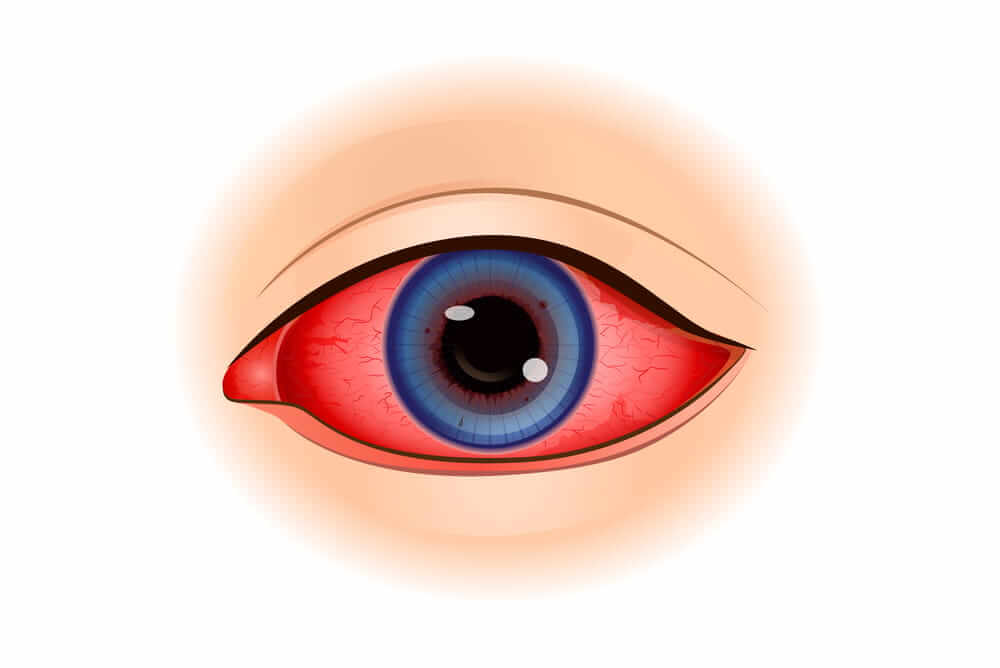Uveitis

What is uveitis?
Uveitis is the inflammation of the uvea, the middle layer of your eye. The eye is shaped much like a ball, with three different layers of tissue surrounding a central gel-filled cavity. The inner most layer is the retina, which senses light and helps to send images to you brain. The middle layer between the sclera and the retina is called the uvea. The outer most layer is called the sclera, the strong white wall of the eye which is for protecting.
What is the importance of the uvea?
The uvea contains many blood vessels, the veins and the arteries that carry blood flow to the eye. Since it nourishes many important parts of the eye (such as the retina), inflammation of the uvea can damage your site. The Eye receives the maximum supply of blood in the body after the brain.
CAUSES AND SYMPTOMS
WHAT ARE THE SYMPTOMS OF THE UVEITIS?
Symptoms of uveitis include:
- Light sensitivity - Photophobia
- Blurring of vision
- Pain
- Redness of the eye
- Floaters
- Diminision of Vision
Uveitis may come on suddenly with the redness and pain, or sometimes with painless blurring of your vision. It can be a potential blinding of the eye if left untreated.
A case of simple "red eye" may in fact be serious problem of the uveitis. If your eye becomes red or painful, and does not clear up quickly, you should be examined and treated by an ophthalmologist. Hence never ignore a red eye with reduction in vision as it may be a harbinger sight threatening disease.
What causes uveitis?
Uveitis has many different causes:
A virus, such as shingles, mumps or herpes
A fungus, such as histoplasmosis:
A parasite, such as toxoplasmosis:
Related disease in other parts of the body, such as arthritis:
A result of injury to the eye. Inflammation in one eye can result from a severe injury to the opposite eye (sympathetic uveitis):
Bacteria, such as syphilis.
In most cases of uveitis, the cause remains unknown. Almost 80% of the cases no cause may be found inspite of undergoing a battery of investigation.
HOW IS IT DIAGNOSED
HOW IS UVEITIS DIAGNOSED?
A careful eye examination by an ophthalmologist is extremely important when symptoms occur. Inflammation inside the eye can permanently effect sight or even lead to blindness, if it is not treated. A therough slit lamp and a dialeted fundus exam is mandatory in every case. Your will examine the inside of your eye. Many times Oct scan (for the detailed imaging of the retinal layers) and FFA (fundus angiography) is done for further understanding of the disease He or she may order blood tests, skin tests or X-rays to help make the diagnosis. Since uveitis can be associated with disease in the rest of the body, your ophthalmologist will want to know about your overall health. He or she may want to consult with your physician or other medical specialists.
ARE THERE DIFFERENT KINDS OF UVEITIS?
There are different types of uveitis, depending on which part of the eye is affected:
When the uvea is inflamed near the front of the eye in the iris, it is iritis. Iritis usually has a sudden onset and may last six to eight weeks; usually the eye is red and painful – eg. AN KY LOSING - SPONDILITS
If the uvea is inflamed in the middle of the eye, it is called intermediate uveitis. It can also come on suddenly and last for several months – Pars – Planitis.
An inflammation in the back of the eye is called retinitis or choroiditis. This is slower to begin and may last longer. The retinal vessels may also be inflamed. This is called vasculitis – Eales Disease, Toxoplasmosis.
HOW IS IT TREATED?
Uveitis is a serious eye condition that may scar the eye leading to permanent visual handicap hence you need to have it treated as soon as possible. Eye drops, especially steroids and pupil dilators, can reduce inflammation and pain. For more severe inflammation, oral medication or injections may be necessary. Oral steroids and antimetabolites may also be used in very serious cases. Many times steroid injections in form of Triamcinolone or Dexamethasone implants (Ozurdex) are given intravitreally (inside the eye) for curing the cystoid macular edema and vitreous inflammation
Uveitis can have these complications:
- Glaucoma (increased pressure in the eye)
- Cataract (clouding of the eyes natural lens)
- Neovascularization (growth of new, abnormal blood vessels).
- Rubeosis
- Retinal Detachment ( Exudative)
- These complications may also need treatment with eye drops, conventional surgery or laser surgery. If you have a "red eye" that does not clear up please see your ophthalmologist urgently.